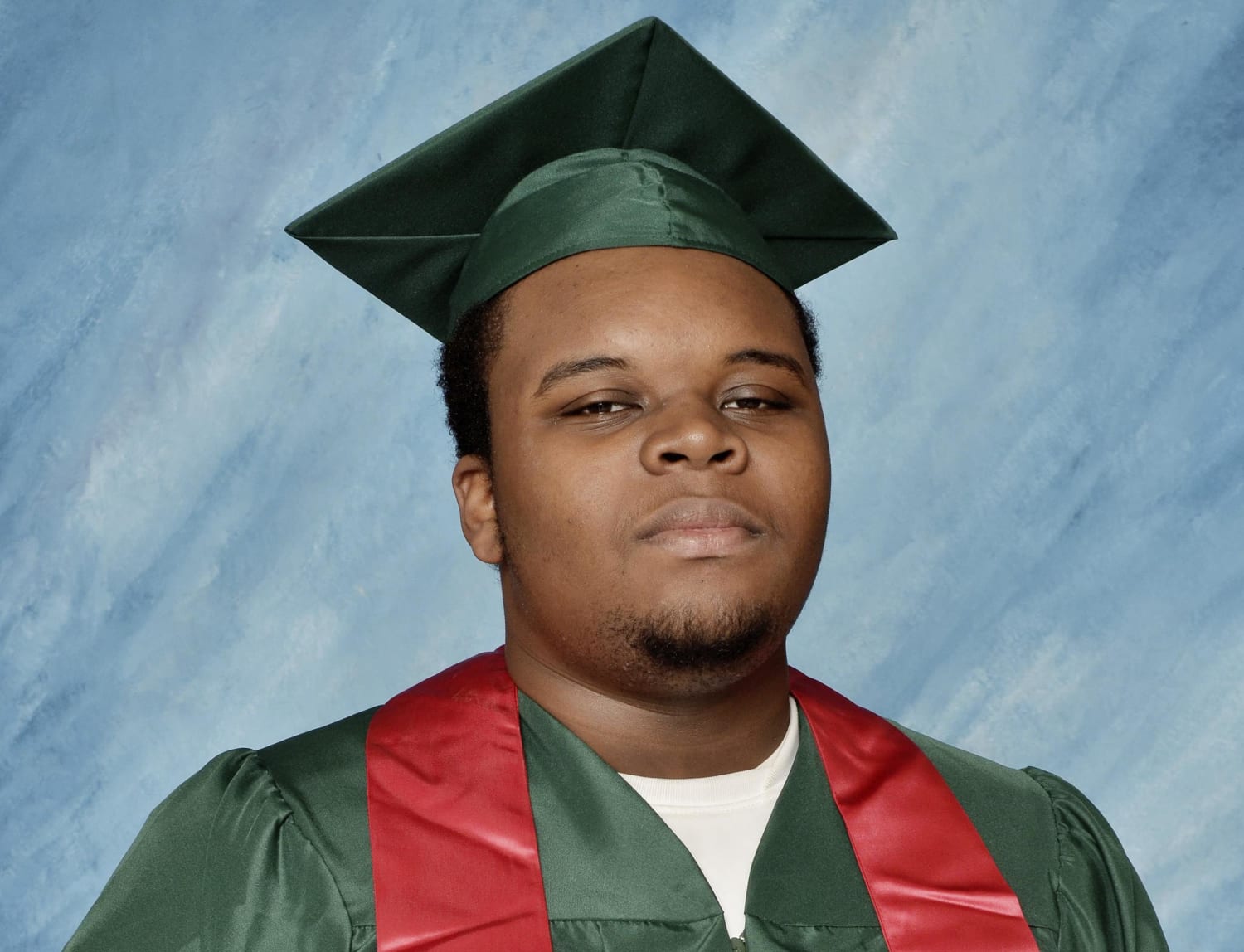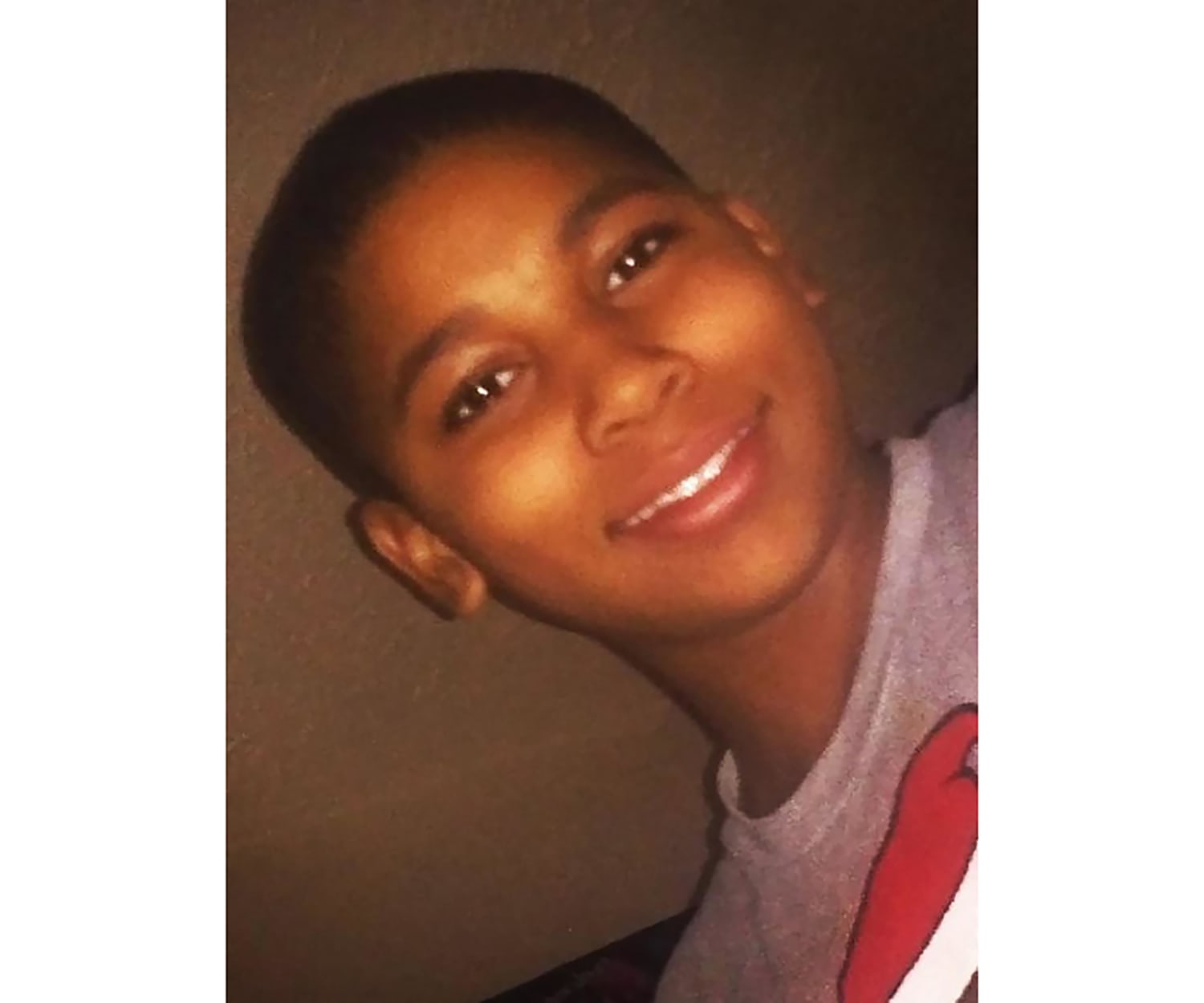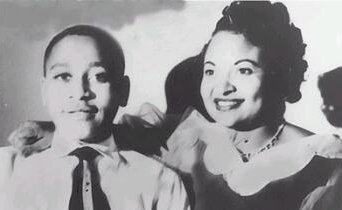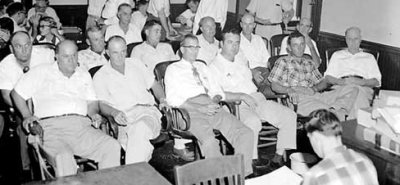By Roberta Nin Feliz
Today marks the three-year anniversary of Trayvon Benjamin Martin’s death, a 17-year-old unarmed African American teenager gunned down by George Zimmerman in Sanford, Florida. Although the death of Martin sparked national outrage and a series of protests, including a National Hoodie day where people wore their hoodies in commemoration of Martin, George Zimmerman was acquitted of second-degree murder and manslaughter charges.
 [source: naacp.org,Trayvon left and his father Tracy Martin, right]
[source: naacp.org,Trayvon left and his father Tracy Martin, right]
Jessica Munoz, a junior at Manhattan Center, describes her reaction upon hearing about Trayvon’s death. “I was surprised, the fact that he got shot while he was just walking home with an Arizona tea. Why would Zimmerman shoot Trayvon if Trayvon didn’t seem to be doing anything? And it kind of looked like Zimmerman did it because Trayvon was black.”
[source: cbsnews.com, George Zimmerman’s mugshot]
Since the death of Martin in 2012, the deaths of three African American men have made national news and gained a national audience outraged by the incidents.
On July 17, 43-year-old Eric Garner died in Staten island, New York, after being put in an illegal choke hold by officer Daniel Pantaleo. A grand jury decided not to indict Pantaleo. Garner’s death sparked a new wave of protests branding his last words “I can’t breathe.” Celebrities that sported Garner’s last words on clothing include the rapper Nas and NBA players like Lebron James and Derrick Rose.
[abcnews.go.com, Eric Garner is placed in the choke hold that caused his death]
In August of 2014, 18-year-old Michael Brown died in Ferguson, Missouri after an alleged quarrel with officer Darren Wilson. Wilson was found not guilty by a grand jury in November later that year.
 [source: nbcnews.com, Michael Brown posing in his cap and gown]
[source: nbcnews.com, Michael Brown posing in his cap and gown]
Months later on November 22, 2014, 12-year-old Tamir Rice was playing in a Cleveland park when officer Timothy Loehmann pulled up and shot him. He died the next day. Cleveland police officers were deemed poorly trained and excessively violent by a Department of Justice Investigation.
 [source nbcnews.com, Tamir Rice smiling at the camera]
[source nbcnews.com, Tamir Rice smiling at the camera]
David Musialik, a history teacher at Manhattan Center expresses his disappointment in police officers “[Police officers] get paid really well. People don’t realize they get paid more than teachers. I need them to be more brave. I can’t have cops on the street that get paid really really well have their fingers on the trigger to start shooting because of the stereotypes they have in their head and nervousness. I need them to be able to handle the situation better.”
In an interview with CNN’s Anderson Cooper, the mothers of the four deceased came together declaring that if their sons had been white, they would still be alive.
Sybrina Fulton, Trayvon’s mother, gives her take on the protest movement spurred by the deaths of these men: “I think this is shedding light [on] what’s going on. This is not something new. It’s been happening. But it’s just been bringing light to what’s happening. It’s bringing it to the forefront which is why there’s so much conversation. Because people are now realizing . . . it’s not just about African-American rights . . . it’s about human rights.”
Gwen Carr, Garner’s mother, adds: “If Eric Garner was a white man in Suffolk County doing the same thing that he was doing — even if he would have been caught selling cigarettes that day — they would have given him a summons and he wouldn’t have lost his life that day,” she said. “I believe that 100 percent.”
Studies show that cops are more likely to pull over and frisk blacks and Latinos than whites. According to DoSomething.org, in New York City, 8% of random stops were of whites compared to 85% of black and Latinos who were also frisked. And in 2010, the U.S Sentencing Commission reported that African Americans receive 10% longer sentences than whites receive for the same crime.
Fulton expresses her frustration with people who don’t understand what people of color go through: “It’s not happening to them, so they don’t quite get it. They think that it’s a small group of African-Americans that’s complaining . The people say that all the time: ‘What are they complaining about now? What are they protesting about now? Until it happens to them, or in their family, then they’ll understand the walk. They don’t understand what we’re going through. They don’t understand the life and they don’t understand what we’re fighting against. I don’t even think the government quite gets it.”
Tamaria Rice, Tamir’s mother, said that she chose to release the video of Tamir’s murder because it was important that the world see what happened to her son.
[clips from the video: http://www.cnn.com/2014/12/12/us/martin-rice-brown-garner-mothers/]
It may be by a haunting coincidence that Tamir Rice looks remarkably like Emmett Till, a 14-year-old African American boy who was brutally murdered for whistling at a white woman in Money, Mississippi on August 28, 1955.
Mississippi was enforcing “Jim Crow” laws up until 1965. Emmett Till, a Chicago native, visited one of the most racist and anti-black states of the time. In the 1950s, Mississippi was 45% black, but only 5% of voting age blacks were registered to vote
 [source:law2.umkc.edu, Emmett and his mother, Mamie Till]
[source:law2.umkc.edu, Emmett and his mother, Mamie Till]
Jalylah Burrell, a Ph.D candidate at Yale for African American studies, says the physical resemblance of both children means little in the greater scheme of things “ I am devastated by the abrupt, cruel, criminal, state-sanctioned snatching of both of their lives. That threat has loomed over black life since the forced migration of Africans to America and subsequent enslavement. What is clear from circulating photographs of both boys smiling is a record of their joy. The smiling child is the normative portrait of childhood that parents aspire to provide for their children, but it is one that remains fully unavailable to African Americans.”
 [source: twitter.com, Tamir Rice,left, Emmett Till, right]
[source: twitter.com, Tamir Rice,left, Emmett Till, right]
Emmett Till was down south visiting his great uncle, Moses Wright, when he whistled and said goodbye to a white cashier, Carolyn Bryant, as he was leaving a grocery store. Roy Bryant, Carolyn’s husband and J.W. Milam kidnapped Till from his uncle’s home. Till was brutally beat, dragged to the bank of the Tallahatchie River, shot in the head and tied with barbed wire to a large metal fan. His body was found three days later, mutilated beyond recognition.
 [source: law2.umkc.edu, Bryant and Milam at their trial]
[source: law2.umkc.edu, Bryant and Milam at their trial]
Bryant and Milam were tried by an all-white, all-male jury and were found not-guilty on September 23, 1955. Protected by double-jeopardy laws, both men confessed to the murder in an interview with Look magazine for $4,000.
 [source: law2.umkc.edu, jury at Bryant and Milams case]
[source: law2.umkc.edu, jury at Bryant and Milams case]
Mamie Till, Emmett’s mother, decided on an open-casket funeral with her son’s body on display for five days. Thousands visited the Roberts Temple Church of God in Chicago. Like Tamir’s mother, Mamie wanted to “let the world see what has happened, because there is no way I could describe this. And I needed somebody to help me tell what it was like.”
[“Before and after” pictures of Emmett Till exist in historical news archives that juxtapose a handsome smiling youth with a photo permitted by the family during his open-casket funeral; but these were deemed too disturbing to appear in this article.]
Till’s death later influenced the civil rights activist Rosa Parks who is known for refusing to sit in the back of the bus. She said “I thought about Emmett Till, and I couldn’t go back [to the back of the bus].”
While the Civil Rights movement concentrates largely on black men, African-American women’s accomplishments and tragedies are often overlooked. African-American women have also been subjected to racial terrorism during the “Jim Crow era” which lasted from 1877 to 1954.
In Jim Crow era Alabama, share-cropper Recy Taylor was raped by seven white assailants on Sept. 4, 1944. Despite efforts by NAACP activist, Rosa Parks, the assault failed to gain international notice.
On November 12, 2013, 19- year-old Renisha McBride was shot by Theodore Wafer, after she crashed her car on a street in Detroit and knocked on his door for help.
 [source: nydailynews.com, Renisha McBride]
[source: nydailynews.com, Renisha McBride]
7-year-old Aniyah Jones was shot and killed in Detroit Michigan on May 16, 2010 in a raid by the Detroit Police Department’s Special Response Team.
 [source: wikipedia.org, Aniyah Jones]
[source: wikipedia.org, Aniyah Jones]
Following the grand jury decision in the police killing of Michael Brown, people began marching under the words “Black Lives Matter;” and later under the phrase “I can’t breathe” (which were Eric Garner’s last words), demanding that justice be served in the nation.
[source: dailymail.co.uk, protesters marching at the Macy’s Thanksgiving Day Parade]
 [source:frontpagemag.com]
[source:frontpagemag.com]
[source: dailymail.co.uk]
All these recent incidents have awakened the social conscience and guilt of this nation and its leaders. President Obama signed an executive order establishing the Task Force on 21st Century Policing which is supposed to foster a better relationship between local law enforcement officers and the communities they serve. The White House has also promoted the use of body cameras which police departments are considering purchasing.
Although the murders of these men are not front page news anymore, genuine progress has yet to be made and faith in the police department and our existing justice system is waning.
Two African-American high school students, Chimdi Alagor and Joyce Boadu, express their frustration at living in a society where blacks are seemingly the most targeted by police officers. Chimdi says: “The problem is that in America black people are just inherently seen as more dangerous. And when you have someone, and you give them a gun, and they’re trained as if the world is a very dangerous place, then they’re going to shoot the “more dangerous” people. And they just think it’s black people.”
Joyce adds: “I was lucky enough to never encounter any of these incidents. I don’t want to be the kind of person where I think someone wants me to fail all the time. But when I look at the news and what’s happening, it kinda feels that way.”